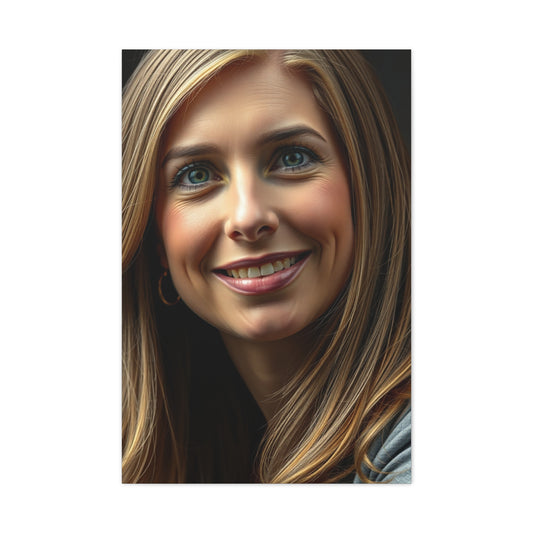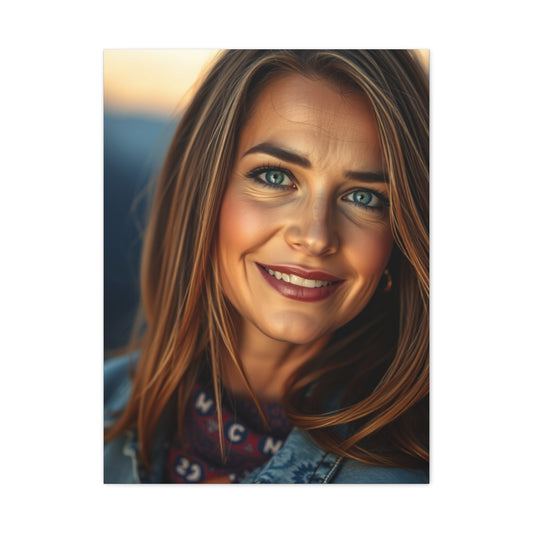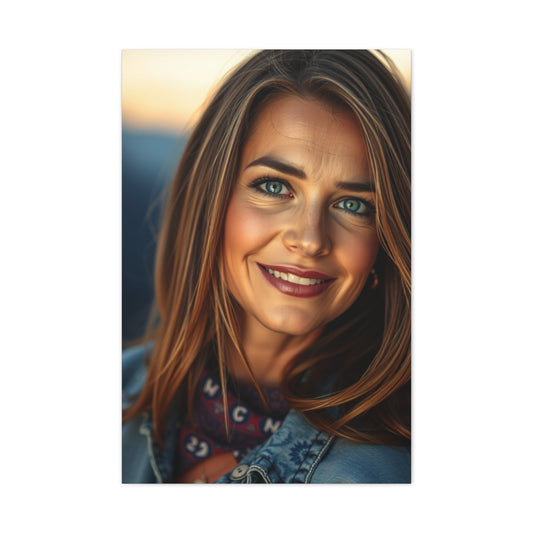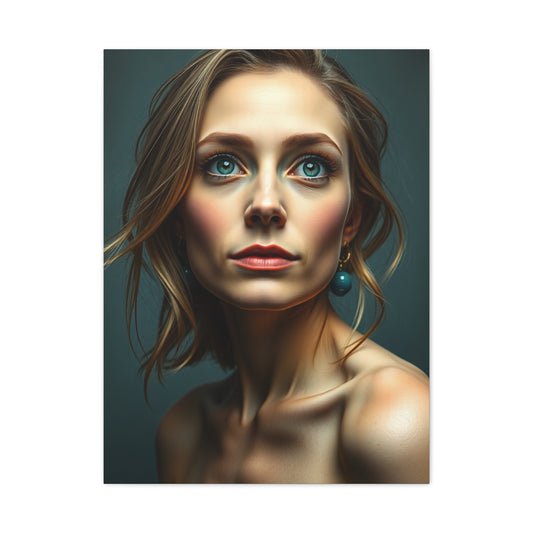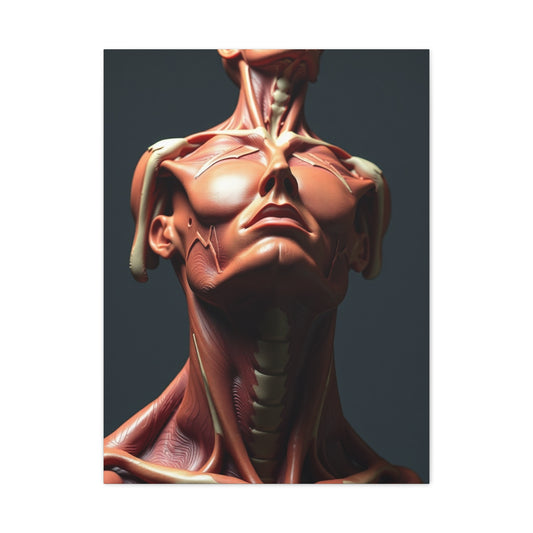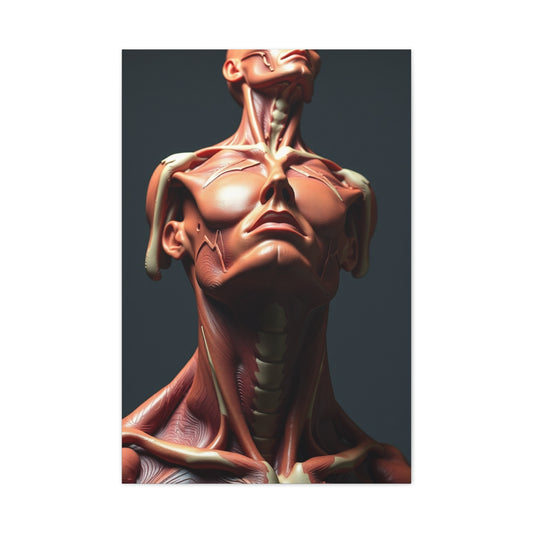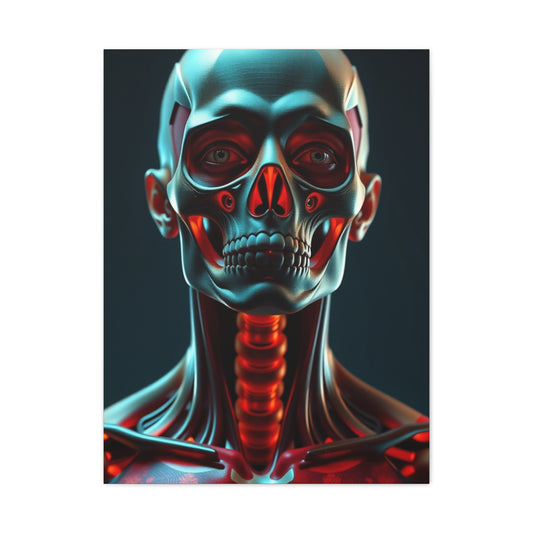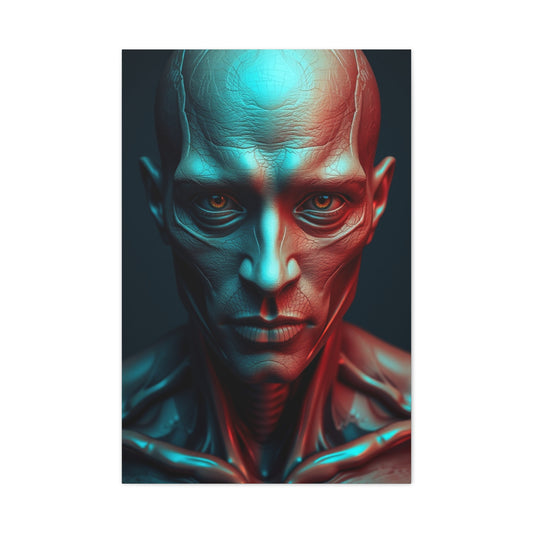Wall art has always played a pivotal role in transforming a space. A carefully selected piece can breathe life into an otherwise plain room, instantly adding character, energy, and a touch of personality. In 2025, wall decor trends are becoming more dynamic than ever, offering versatile options that cater to every aesthetic—from minimalism to bold maximalist styles. Today, interior design enthusiasts are exploring innovative ways to combine trends, color palettes, and artistic influences to elevate the ambiance of their homes.
Color has always been a defining feature of wall art, and this year, designers are pushing boundaries with innovative combinations. While neutral tones remain foundational, they are being paired with vibrant accents for added depth and dimension. Mixing warm and cool tones, experimenting with pastel shades, and combining contrasting colors can create a dynamic and energetic environment. Rather than following traditional rules, 2025 encourages thoughtful experimentation to express individuality. Even small pops of unexpected color in an artwork can dramatically change the mood of a room, making color selection an essential consideration when curating wall art.
Minimalism continues to influence wall decor, but it’s now being complemented by more expressive, statement-driven designs. Clean lines, geometric shapes, and subtle monochromatic pieces offer balance and calm, serving as a backdrop to more vivid elements in a room. Minimalist art allows for flexibility in styling, making it easy to integrate with other design trends. It also emphasizes quality over quantity, encouraging homeowners to select pieces with meaning and purpose rather than filling walls indiscriminately.
Pop culture has become an influential source of inspiration for wall art. From modern depictions of musicians and actors to reinterpretations of iconic media, contemporary homes increasingly feature artworks that celebrate cultural moments and figures. Pop culture wall art is appealing because it blends personal interests with aesthetic value. It often evokes nostalgia, references shared cultural experiences, and provides an accessible entry point for integrating art into everyday spaces. This trend is not confined to any single room—living areas, bedrooms, and even hallways can benefit from a thoughtful pop culture-inspired addition.
The resurgence of classic art is also a notable trend this year. While it may seem counterintuitive for a trend-focused year, incorporating classical artwork with modern interpretations has proven to be highly stylish. Prints that reference historical masterpieces can be reimagined through contemporary color palettes, innovative materials, or creative framing techniques. These combinations merge timeless elegance with modern sensibilities, creating a sophisticated look that is both current and enduring. Integrating classical pieces into contemporary interiors encourages a dialogue between eras, adding cultural depth and visual interest to a room.
Another important trend involves the exploration of thematic and symbolic art. Mandalas, abstract shapes, and spiritual motifs are gaining popularity for their calming and meditative qualities. These pieces often focus on symmetry, repetition, and intricate detailing, which can add a sense of balance and flow to a space. Mandala-inspired wall art, in particular, appeals to homeowners seeking both aesthetic beauty and a meaningful focal point. The intricate designs work well on large canvas prints or as part of a curated gallery wall, providing versatility in placement and scale.
Bedroom decor is seeing a fresh approach to wall art in 2025. Often overlooked in the past, the bedroom is now recognized as a critical space for personal expression and mood-setting. Abstract brushstroke designs, soft-toned landscapes, and subdued geometric prints are emerging as popular options for creating relaxing yet visually engaging spaces. These selections complement the calming function of the bedroom while still providing artistic appeal. Layering textures, incorporating subtle color gradients, and choosing prints that resonate personally can make the bedroom a sanctuary that reflects individual taste.
The choice of blue in wall art remains enduringly popular. Blue, in its many shades, is versatile and calming, making it ideal for various interiors. From deep indigo to light periwinkle, blue-toned art can harmonize with neutral backdrops or serve as a bold accent in contemporary settings. Designers are increasingly experimenting with combinations of blue, dusty rose, and complementary tones, creating rooms that are visually stimulating while maintaining a sense of cohesion. Whether used as a dominant color or a subtle highlight, blue continues to influence modern design sensibilities.
|
Related Catagories: |
In addition to design and color considerations, the scale and placement of wall art are crucial. Large pieces can anchor a room, while smaller artworks contribute to layered, curated walls. Multi-panel canvases, vertical prints, and gallery arrangements offer flexibility for different wall sizes and layouts. Measuring wall space carefully and considering the surrounding furniture ensures balance and proportion. Generally, wall art should occupy roughly 60 to 75 percent of available wall space for maximum visual impact. Placement above key furniture pieces, such as beds, sofas, or consoles, can enhance focal points and harmonize with room layouts.
Line art and minimalist sketches are rising in popularity due to their simplicity and versatility. These pieces work well across diverse interiors, from modern and minimalist to bohemian and eclectic styles. Their neutral color schemes and clean forms allow them to complement existing decor without clashing, while their elegance adds subtle sophistication. Framing options further enhance the presentation, whether opting for classic wooden frames or unframed canvases for a contemporary look.
Finally, typography and definition-inspired art are emerging trends that appeal to those who favor personalized or meaningful statements in their homes. These pieces often incorporate bold letters, inspirational words, or abstract typographic forms to create visual interest. Typography-based art allows for a unique combination of literary and visual elements, transforming words into design statements that resonate with the inhabitants of a space. Its adaptability makes it suitable for any room, from offices and studios to living spaces and bedrooms.
As we move further into 2025, one of the most exciting aspects of wall art is the ability to combine multiple styles and design influences in a single space. Modern interiors increasingly favor versatility and thoughtful layering, encouraging homeowners to mix bold statement pieces with subtle, minimalist accents. This year’s trends highlight the creative possibilities of merging various artistic approaches, allowing a home to feel both cohesive and personalized. From abstract compositions to botanical motifs and geometric designs, the goal is to curate spaces that are visually stimulating while remaining harmonious.
Combining Multiple Styles
One of the key principles in 2025 is the art of blending styles. Interiors are no longer confined to a single aesthetic. Instead, they embrace a more eclectic approach where classic, contemporary, and even retro influences can coexist. For instance, a room might feature a large floral canvas alongside a minimalist line drawing. The juxtaposition of the detailed natural forms with the simplicity of linear artwork creates a balanced yet striking visual effect. Similarly, abstract pieces can be layered with modern typographic prints to infuse energy and movement into a space without overwhelming it.
Another popular approach is merging modernism with nostalgic references. Retro-inspired prints, often drawing from the aesthetics of the 70s and 80s, are being paired with contemporary color palettes and furniture. This combination provides a sense of familiarity and warmth while keeping the space fresh and updated. Multi-panel artworks are particularly effective for this approach, as they allow for complex designs to unfold across multiple canvases. By splitting a vibrant composition into segments, the piece gains dimension, depth, and a dynamic presence in a room.
Exploring Color in Wall Art
Color remains one of the most powerful tools for transforming a space. While neutral tones continue to provide a reliable base, 2025 encourages experimenting with unexpected color combinations to add vibrancy and individuality. Warm tones, such as mustard, burnt orange, and terracotta, are being paired with cooler hues like teal, periwinkle, and navy. This contrast creates visual tension and draws the eye to the artwork, making it the focal point of the room. Pastel shades are also emerging as subtle complements to bolder colors, softening the intensity of large-scale prints without diminishing their impact.
Layering color within a single piece of art can produce depth and intrigue. For example, a painting might incorporate gradient transitions from soft pastels to vivid, saturated tones, giving the illusion of movement and energy. Homeowners are encouraged to consider how a piece of wall art interacts with the surrounding decor, including furniture, textiles, and flooring. Complementary colors can unify a space, while contrasting shades can create a sense of drama and sophistication. Even subtle hints of color in small accents, such as cushions or decorative objects, can enhance the overall cohesion and highlight key elements of a painting.
Multi-Panel Artwork
The rise of multi-panel artwork is one of the defining trends of 2025. By dividing a single design across several panels, these pieces create a sense of scale and dynamism that single-canvas prints often cannot achieve. Multi-panel art allows for creative placement on walls of varying sizes, making it adaptable to both large living areas and smaller, intimate spaces. The arrangement of the panels—whether evenly spaced or staggered—can alter the perception of the artwork, adding an interactive element to the viewing experience.
This approach also offers flexibility in integrating multiple styles within one overarching composition. For instance, a set of three panels might combine a central abstract piece with flanking botanical prints, creating a narrative flow that guides the viewer’s eye across the wall. Multi-panel works can also accommodate seasonal or rotational updates, allowing homeowners to swap panels or rearrange them according to evolving tastes without completely replacing the artwork.
Typography and Statement Art
Typography continues to play an influential role in contemporary wall art. Words and phrases are being transformed into visual statements, with designers experimenting with bold fonts, layered text, and abstract arrangements. Statement pieces featuring motivational quotes, literary excerpts, or playful phrases add a personalized touch to a space. They are particularly effective when combined with other art forms, such as botanical prints or abstract canvases, as the contrast between text and imagery creates both interest and balance.
Typography in wall art is not just about the words themselves; the style, color, and placement of the letters contribute to the overall impact. For example, a large typographic piece in a single bold color can dominate a neutral wall, while layered text with subtle gradients can provide a more understated, contemplative effect. The versatility of typographic art makes it suitable for a variety of spaces, including bedrooms, living areas, and home offices.
Pop Culture Influences
Pop culture remains a rich source of inspiration for wall art in 2025. Music, cinema, and iconic personalities continue to shape contemporary tastes, with many people opting for artwork that celebrates cultural moments or historical eras. Prints featuring legendary musicians, abstract interpretations of album covers, or stylized portraits of famous figures allow homeowners to integrate personal interests into their living spaces. This approach not only adds character but also sparks conversation and connection.
Incorporating pop culture-inspired art does not require a room to become themed or overly stylized. Instead, subtle references, minimalist depictions, or abstracted representations of cultural icons can provide a sophisticated nod to contemporary influences. Blending these pieces with more traditional or modern artwork ensures that the overall aesthetic remains balanced and timeless, even when drawing from modern cultural touchpoints.
Classic and Contemporary Fusion
Another notable trend for 2025 is the fusion of classic artwork with contemporary interiors. Reinterpretations of historical masterpieces are being adapted through modern techniques, vibrant colors, and innovative framing. This allows timeless pieces to coexist seamlessly with modern furniture, clean lines, and minimalistic designs. The goal is to create spaces that feel both refined and approachable, where classic art enhances rather than overwhelms the contemporary context.
Pairing classical artwork with modern elements also opens the door for creative experimentation. For instance, a traditional landscape painting can be reframed in a sleek, metallic frame, or a Baroque-inspired portrait might be stylized with bright, unexpected color overlays. By blending eras, homeowners can craft interiors that are culturally rich, visually stimulating, and uniquely expressive.
Texture and Materials
Beyond visual style, texture and materials are increasingly important in wall art trends. Canvas, metal, wood, and mixed-media pieces provide tactile dimensions that enhance the sensory experience of a room. Layered textures can add depth to minimalist spaces, while smooth surfaces and sleek finishes complement bolder, more vibrant artworks. In particular, textured canvas prints and relief-style pieces allow light and shadow to interact with the artwork, creating subtle visual shifts throughout the day.
Textural considerations also influence the selection of frames and mounting techniques. Floating frames, deep-set borders, or unframed canvases each offer distinct effects, allowing homeowners to customize the presentation according to the overall aesthetic. Even small details, such as the sheen of a print or the weave of a canvas, can significantly affect the perception of a piece and its ability to harmonize with surrounding elements.
Curating a Gallery Wall
Curated gallery walls are another hallmark of 2025 interior design. By combining multiple pieces of varying sizes, styles, and materials, homeowners can create personalized focal points that reflect both taste and individuality. Successful gallery walls balance proportion, spacing, and thematic cohesion, ensuring that each piece contributes to the overall composition. Including a mix of photography, line art, abstract designs, and typography can create visual rhythm, preventing monotony while maintaining harmony.
Arranging a gallery wall involves careful planning, including measuring wall space, establishing a visual hierarchy, and considering color balance. Central pieces often anchor the composition, while smaller, complementary artworks surround them. The flexibility of gallery walls makes them ideal for experimentation, allowing homeowners to rotate pieces or introduce new elements over time without disrupting the overall aesthetic.
The Role of Mood and Atmosphere
Finally, it is essential to consider the mood that wall art can evoke within a space. Color, scale, and subject matter all contribute to the emotional atmosphere of a room. For instance, calming blues, soft pastels, and natural motifs can create a serene environment, ideal for bedrooms or reading nooks. Conversely, bold abstracts, high-contrast graphics, and large-scale installations can energize living areas and communal spaces. Understanding how artwork interacts with light, furniture, and other decor elements ensures that each piece enhances the desired ambiance.
The flexibility of modern wall art allows homeowners to craft spaces that are both functional and visually engaging. From statement-making multi-panel prints to understated line art, the focus in 2025 is on personal expression, creative combinations, and thoughtful curation. By blending color, style, texture, and cultural influences, wall art becomes a versatile tool for shaping interiors that are uniquely reflective of individual taste and contemporary design sensibilities.
As wall art continues to evolve in 2025, attention is shifting not only toward color and style combinations but also to the types of artwork that define a room’s character. From spiritual mandalas and abstract brushstrokes to bold color schemes and minimalist architecture, homeowners now have more opportunities than ever to select pieces that enhance specific spaces. Understanding how different artistic motifs and styles interact with room functions is essential for creating cohesive, inspiring interiors.
Mandala Wall Art: Spirituality Meets Design
Mandala-inspired art has gained significant popularity in modern interiors, blending aesthetic appeal with symbolic meaning. Rooted in Eastern traditions, mandalas are circular designs that often represent balance, unity, and inner harmony. In 2025, mandala wall art is being embraced for both its visual beauty and its ability to influence the mood of a space. Vibrant mandala prints with intricate patterns can serve as focal points in living rooms, meditation areas, or bedrooms, encouraging calm and positive energy.
These designs are versatile, working equally well as large statement pieces or smaller accent prints. Their symmetrical patterns provide visual rhythm, making them suitable for both minimalist and eclectic interiors. When selecting mandala artwork, it’s important to consider scale and placement. Large-scale mandalas can dominate a wall and set the tone for an entire room, while smaller pieces can complement furniture or architectural features. Colors also play a role; warm tones such as gold, rust, and coral convey energy, whereas cooler shades like teal, lavender, or indigo evoke relaxation.
Abstract Brushstrokes: Modern Energy and Expression
Abstract wall art remains a cornerstone of contemporary interior design, offering flexibility and a sense of motion. Brushstroke-based artworks, in particular, are trending in 2025 due to their ability to convey emotion through color, texture, and form. These pieces often feature layered paints, gradients, and bold strokes that create a dynamic and lively atmosphere. Abstract brushstroke prints are ideal for spaces where energy and creativity are desired, such as living rooms, home offices, or creative studios.
One advantage of abstract brushstrokes is their adaptability. They can blend seamlessly with minimalist décor or contrast dramatically against neutral walls to create a focal point. Color selection is key—bright, saturated hues energize a space, while muted tones provide subtle sophistication. Additionally, brushstroke art can be scaled to suit different wall sizes, from intimate single-panel canvases to large multi-panel installations that dominate a living area. The inherent versatility of these prints makes them a go-to choice for modern homeowners seeking a contemporary yet timeless aesthetic.
Bedroom Wall Art: Personalized Retreats
The bedroom is increasingly recognized as a vital space for self-expression through wall art. Unlike living areas or kitchens, bedrooms benefit from artwork that complements the personal and restorative nature of the space. Calm and muted tones, abstract landscapes, and serene line drawings are often chosen to create a soothing atmosphere conducive to relaxation. However, even in tranquil environments, incorporating a single bold statement piece can add interest without overwhelming the room.
Line art and minimalist sketches are particularly effective for bedroom walls. Their simplicity ensures a clean and uncluttered appearance, allowing the surrounding furniture and textiles to shine. Additionally, abstract brushstrokes or subtle geometric compositions can provide visual intrigue while maintaining the calming qualities of the room. When arranging bedroom art, scale, and proportion should be carefully considered; artwork positioned above the bed or dresser should harmonize with the furniture’s width, generally occupying about two-thirds to three-quarters of the available space. Proper placement ensures balance and allows the artwork to enhance the room rather than dominate it.
Living Room Wall Art: Bold Statements and Cohesion
In living spaces, wall art often serves as a central design element. Bold and colorful pieces can define the atmosphere of a room, becoming conversation starters and focal points. Multi-panel prints, pop culture-inspired artwork, and abstract compositions are excellent choices for creating a contemporary living area. The key in 2025 is to balance these bold statements with complementary design elements, such as sleek furniture, neutral walls, and subtle textiles, to prevent visual clutter.
Gallery walls continue to be a popular option for living rooms, offering a curated way to display multiple artworks of varying sizes, styles, and materials. By thoughtfully arranging prints, photographs, and line art, homeowners can craft a dynamic yet cohesive wall display. Consider the rhythm, spacing, and color balance when assembling a gallery wall; grouping similar tones or styles creates unity, while contrasting elements add energy and depth.
Blue Wall Art: The Timeless Neutral
Blue continues to dominate modern interiors due to its versatility and calming presence. In 2025, blue wall art is evolving beyond traditional use, serving as both a subtle complement and a bold statement of color. From deep navy and indigo to softer shades like periwinkle and dusty blue, these tones can anchor a space or enhance a layered color scheme. Pairing blue artwork with neutral backgrounds or warm accent tones creates visual contrast and depth.
The applications of blue wall art are wide-ranging. Bedrooms, for instance, benefit from soft blue prints that evoke relaxation and serenity, while living rooms can incorporate deeper shades to add sophistication. Multi-panel blue canvases can draw attention and unify the room, while subtle blue accents in abstract compositions or line art contribute to a balanced, contemporary look. Whether used dominantly or sparingly, blue remains a reliable choice for modern interiors seeking timeless elegance.
Neutral and Earth-Toned Art: Subtle Sophistication
While bold colors are popular, neutral and earth-toned artworks maintain relevance in 2025. Soft beige, ivory, taupe, and muted greens allow for versatile layering and easy integration with furniture and décor. These tones provide a foundation for more expressive elements, balancing vibrant colors or complex patterns within a space. Neutral art also enhances the perception of spaciousness, making it ideal for compact rooms or minimalistic interiors.
Natural motifs, such as landscapes, botanical illustrations, and abstract forms inspired by organic shapes, are frequently paired with these subdued color palettes. The result is a refined and calming environment that complements rather than competes with other design elements. When selecting neutral artwork, attention to texture and composition is crucial; subtle variations in material or brushwork can elevate a simple color scheme into an engaging visual experience.
Minimalist Architecture and Line Drawings
Minimalist architecture-inspired wall art is another trend that continues to gain traction. Characterized by clean lines, geometric forms, and structured compositions, this style complements modern and contemporary interiors. Architectural prints, whether abstracted or literal, can provide visual order and balance, making them ideal for spaces dominated by bold colors or complex textures.
Line drawings, often monochromatic and stripped of extraneous detail, offer a similar benefit. Their simplicity allows for easy integration with other décor while contributing sophistication and elegance. These prints are particularly adaptable, working in bedrooms, offices, and living areas alike. The emphasis on line, form, and negative space encourages a sense of calm and clarity within the environment.
Combining Textures and Materials
In 2025, homeowners are increasingly experimenting with the tactile qualities of wall art. Mixed-media pieces, textured canvases, and layered materials add dimensionality and intrigue to any room. Textures such as raised paint, metallic foils, and fabric overlays interact with light and shadow, producing subtle shifts throughout the day. These qualities enhance both minimalist and maximalist designs, providing depth without requiring additional decorative elements.
Material choice also affects the overall aesthetic. Canvas remains a popular medium for traditional and abstract works, while metal, wood, and composite materials offer a contemporary, industrial feel. Combining textures across multiple artworks on a single wall can create a gallery effect, offering interest and variety while maintaining cohesion through consistent color or thematic choices.
The Role of Scale and Placement
Understanding scale is fundamental to creating a balanced and impactful wall design. Oversized pieces can dominate a space and act as focal points, while smaller prints contribute to layered, curated walls. In larger living areas, multi-panel arrangements or expansive abstract compositions can command attention, whereas intimate spaces benefit from strategically positioned smaller artworks.
Placement should also consider surrounding furniture and architectural features. Art positioned above couches, beds, or consoles generally occupies two-thirds to three-quarters of the furniture’s width, ensuring proportional harmony. Ceiling height, wall dimensions, and natural light also influence how a piece interacts with the room, enhancing both visibility and ambiance.
Mood and Atmosphere
Finally, selecting artwork with consideration for mood and atmosphere is vital. Bold, energetic colors and abstract patterns invigorate social spaces, while calming blues, muted neutrals, and soft textures promote relaxation in private areas. Mandalas, line drawings, and nature-inspired art can introduce balance, serenity, and a sense of mindfulness. By aligning the emotional resonance of a piece with the intended function of a room, homeowners can create spaces that are not only visually appealing but also emotionally supportive.
In 2025, wall art is more than just decoration—it is a medium for personal expression, a way to set the tone of a room, and an opportunity to merge style, culture, and emotion. With the variety of artistic trends, colors, and materials available, homeowners now have the tools to curate spaces that are both visually compelling and uniquely reflective of their personality. In this final part of the series, we explore the role of framing, typography, multi-panel arrangements, gallery walls, and other strategies for thoughtfully curating wall art to create interiors that resonate with modern design sensibilities.
Framing Options: Framed vs. Unframed Art
Choosing whether to frame a piece of artwork or leave it unframed can significantly affect a room’s aesthetic. Framed pieces often provide a sense of refinement, structure, and formality. A wooden or metal frame can create contrast against the wall, giving the impression that the artwork is floating, particularly when paired with a minimalist or neutral background. Framed art is also ideal for gallery-style presentations, where consistent framing unifies a collection of diverse prints or photographs.
Unframed artwork, by contrast, conveys a more contemporary and relaxed feel. Canvas prints or panel pieces without frames emphasize the art itself rather than its boundary, allowing colors, textures, and shapes to interact seamlessly with surrounding design elements. In 2025, unframed multi-panel canvases are especially popular, as they allow for fluid movement and adaptability across walls of varying sizes. The choice between framed and unframed art ultimately depends on the desired tone—formal and structured versus modern and immersive.
Typography and Definition-Inspired Wall Art
Typography has emerged as a prominent trend in wall art, bridging the gap between literature, design, and personal expression. In 2025, typographic pieces often feature bold statements, inspirational words, abstract arrangements, or minimalist letterforms. These works provide both visual impact and conceptual meaning, making them versatile additions to bedrooms, living rooms, or workspaces.
Typography-based art can also serve as a focal point in a room, particularly when combined with other artistic styles. For instance, placing a typographic print alongside abstract brushstrokes or botanical motifs creates an interplay between text and image, adding depth and dimension to the overall composition. Designers often experiment with layering, scale, and color to make typographic elements stand out without overwhelming other design components. Even a single letterform or word can convey energy and personality, demonstrating that simplicity can be as powerful as complexity in visual storytelling.
Multi-Panel Arrangements: Expanding Artistic Presence
The popularity of multi-panel wall art continues to grow in 2025, offering unique ways to expand visual interest and explore spatial composition. Multi-panel artworks are typically divided into two or more canvases that together form a cohesive design. This approach allows for larger-scale installations, which are ideal for accentuating key areas such as above sofas, beds, or dining tables.
One advantage of multi-panel art is its adaptability. Homeowners can adjust spacing between panels, stagger their arrangement, or even rotate sections to create different visual effects. Multi-panel designs also support the combination of multiple styles within one overarching concept. For example, an abstract painting split across three panels might incorporate subtle line drawings or botanical overlays, producing a layered and multidimensional visual experience. The scale, color, and orientation of each panel can be tailored to the specific dimensions and flow of a room, ensuring a balanced and harmonious appearance.
Gallery Walls: Curating Collections
Gallery walls remain a key trend for 2025, offering a flexible and personalized way to display multiple artworks. A well-curated gallery wall balances variety with cohesion, combining different sizes, styles, and textures while maintaining a unifying theme. Prints, photographs, line art, abstract compositions, and typographic pieces can all coexist on a single wall, allowing homeowners to showcase personal interests and artistic preferences.
When creating a gallery wall, proportion and spacing are essential. Larger pieces often serve as anchors, while smaller artworks fill in gaps and add rhythm. Color balance is equally important—grouping similar tones or complementary palettes creates visual unity, while occasional contrasting pieces add excitement and focus. One popular approach in 2025 is mixing traditional frames with unframed canvases or integrating textured materials like wood and metal to create depth and intrigue. By thoughtfully arranging pieces, gallery walls can become immersive focal points that define the character of a room.
Line Art and Minimalist Architecture
Minimalist architectural prints and line art continue to gain prominence, particularly for homeowners seeking a modern and clean aesthetic. Characterized by geometric forms, structural precision, and monochromatic color schemes, these artworks provide a sense of order and calm. They are versatile enough to complement bold, colorful statement pieces or blend seamlessly with neutral-toned interiors.
Line art, with its simplicity and elegance, is particularly effective in bedrooms, home offices, and compact spaces. Its minimalistic design allows it to convey sophistication without overwhelming a room, making it ideal for layering with other styles. Architectural and linear pieces also emphasize form and negative space, which can enhance the perception of room dimensions and flow.
Incorporating Texture and Materials
Texture is increasingly recognized as a key component of wall art. Mixed-media pieces, embossed canvases, and layered materials add tactile dimension and visual interest. For instance, a canvas featuring raised brushstrokes or metallic accents interacts with natural and artificial light, producing subtle shifts in perception throughout the day. Textured wall art works especially well when paired with minimalist furniture or monochromatic backgrounds, providing depth without cluttering the space.
The choice of materials can also complement a room’s overall design language. Wood, metal, and composite materials lend contemporary or industrial qualities, while traditional canvas retains a classic feel. Mixing textures within a single wall arrangement allows homeowners to create layered and visually engaging environments, highlighting contrasts between smooth, matte, and reflective surfaces.
Scale and Placement Considerations
Understanding scale remains a cornerstone of effective wall art placement. Large pieces can define a room and serve as bold focal points, while smaller artworks contribute to layered compositions or gallery arrangements. In general, wall art should occupy approximately 60 to 75 percent of the available wall space, depending on surrounding furniture and architectural elements.
Placement also affects perception and interaction. Art positioned above key furniture, such as sofas, beds, or consoles, should generally span two-thirds to three-quarters of the furniture’s width to achieve balance. Height is another consideration; the center of a piece is typically aligned at eye level, ensuring accessibility and visual comfort. Strategic placement allows wall art to complement the room’s flow, draw attention to architectural features, and reinforce overall design cohesion.
Color Harmony and Mood
Color remains one of the most impactful elements in wall art curation. In 2025, bold contrasts, unexpected combinations, and layered tones dominate design choices. Warm shades like ochre, terracotta, and burnt orange can energize a space, while cooler hues such as blues, indigos, and teals promote relaxation. Neutral palettes offer flexibility, allowing artwork to blend with existing décor while providing a canvas for accent pieces.
Mood plays a critical role in color selection. Vibrant and saturated prints energize living spaces and social areas, while soft pastels and muted tones suit bedrooms or meditation spaces. Abstract brushstrokes, line drawings, and mandala designs can subtly influence emotional resonance, creating a sense of balance, calm, or excitement depending on the composition and palette.
Curating a Cohesive Wall Art Collection
Successfully curating wall art in 2025 requires a thoughtful approach to style, color, scale, and placement. Rather than relying on a single trend, homeowners are encouraged to mix styles, integrate multiple textures, and combine classic and contemporary influences. Multi-panel works, gallery walls, typographic pieces, and abstract brushstrokes can coexist harmoniously when curated with a focus on balance and narrative.
Consider the flow of each room and how the artwork interacts with light, furniture, and other decor elements. Integrating personal preferences, cultural references, or meaningful motifs enhances both the visual and emotional impact of a space. Thoughtful curation ensures that wall art becomes a defining element of the interior, transforming blank walls into dynamic and engaging environments.
By 2025, wall art is no longer an afterthought—it is a central element of interior design that shapes mood, expresses individuality, and defines style. Framing choices, typography, multi-panel arrangements, gallery walls, and the integration of texture, color, and scale all contribute to creating cohesive and compelling spaces. Whether incorporating spiritual mandalas, abstract brushstrokes, minimalist line art, or typographic statements, homeowners now have the freedom to experiment and curate walls that are both visually stimulating and emotionally resonant.
The emphasis on versatility, layered creativity, and personal expression encourages homeowners to blend styles, explore unconventional color combinations, and utilize diverse materials. Walls are transformed into canvases that reflect both contemporary design trends and the unique character of the people who inhabit the space. By thoughtfully selecting and arranging artwork, any room can become a dynamic, engaging environment that balances aesthetics, mood, and individuality.
Ultimately, wall art in 2025 is about experimentation, intentionality, and storytelling. Each piece contributes to the narrative of a home, whether it is a bold statement, a subtle accent, or a carefully curated collection. By embracing these trends and principles, homeowners can transform their walls into immersive expressions of style, culture, and personal identity, ensuring that every interior is not only beautiful but also meaningful.
In 2025, wall art has evolved into a central element of interior design, serving not only as decoration but also as a medium for self-expression, mood-setting, and storytelling. As homeowners become more intentional with their choices, the process of curating and arranging wall art has become a sophisticated practice, blending artistic insight, spatial awareness, and an understanding of lifestyle needs. In this section, we explore advanced strategies for selecting, arranging, and integrating wall art into interiors, emphasizing creativity, versatility, and longevity.
Thematic Inspiration and Conceptual Cohesion
One of the most important elements of contemporary wall art curation is the establishment of a clear theme or conceptual framework. Themes can be inspired by color palettes, cultural influences, personal experiences, or even abstract concepts. For example, a coastal-inspired theme might feature soft blues, sandy neutrals, and nature-inspired prints such as waves, shells, or seascapes. A more modern, urban theme could incorporate geometric line art, architectural photography, and bold typographic elements.
Conceptual cohesion ensures that multiple artworks coexist harmoniously within a space. It allows for the integration of diverse styles—such as abstract, minimalist, or pop culture-inspired art—without creating visual chaos. In practice, this might involve selecting prints that share a common color scheme, compositional balance, or emotional tone. Thematic inspiration serves as a guide for layering pieces of varying scales, textures, and mediums while maintaining an overarching sense of unity.
Layering Artworks for Depth and Interest
Layering is a technique that adds dimension and interest to a wall by arranging multiple pieces in a visually dynamic way. This approach goes beyond simple gallery walls or linear arrangements and emphasizes the interaction between artworks, textures, and negative space. Layering can involve overlapping frames, mixing framed and unframed pieces, or incorporating elements such as wall-mounted sculptures and textured panels alongside traditional prints.
The interplay of scale and depth is key to effective layering. Large statement pieces can anchor the arrangement, while smaller, more detailed artworks create visual rhythm. Layering also allows homeowners to integrate artwork of differing styles, such as combining abstract brushstrokes with line drawings or mandala motifs with typographic statements. The result is a curated environment that feels intentional, dynamic, and multidimensional.
Integrating Art with Interior Functionality
In addition to aesthetics, wall art should enhance the functionality and atmosphere of a room. Different types of spaces benefit from different approaches to art selection and placement. For instance, bedrooms often require calming, serene pieces that support relaxation and restorative sleep. Abstract landscapes, soft-toned mandalas, or minimalist line art are particularly effective in these settings.
Conversely, social areas such as living rooms or dining rooms benefit from bold statement pieces that energize and engage visitors. Multi-panel abstract prints, vibrant pop culture-inspired artworks, and typographic compositions can establish a focal point and encourage conversation. Functional considerations also extend to lighting, furniture placement, and sightlines, ensuring that the artwork complements rather than competes with the room’s purpose.
Sustainable and Ethical Art Practices
As design trends evolve, there is increasing attention to sustainability and ethical practices in wall art. Many homeowners now seek artwork created with environmentally responsible materials, non-toxic paints, and fair production standards. Canvas prints made from recycled materials, sustainably sourced wood frames, and low-impact printing techniques are gaining popularity. Choosing art with a sustainable focus not only aligns with ethical values but also ensures durability and long-term visual appeal.
Sustainability can also influence curation decisions. Rotating artworks seasonally or repurposing existing prints encourages mindful consumption, reducing the need for frequent replacements. Incorporating locally sourced or handmade artwork adds a personal touch while supporting ethical production practices. These considerations contribute to a holistic approach to wall art that combines aesthetics, functionality, and social responsibility.
Exploring Multi-Sensory Art Experiences
Beyond visual impact, wall art can engage multiple senses, enhancing the overall experience of a room. Textured surfaces, layered materials, and interactive elements invite tactile exploration, while sound-responsive or light-reactive pieces introduce movement and dynamic energy. While these approaches remain niche, they are increasingly embraced in experimental interiors, particularly in creative studios, home offices, or entertainment areas.
Multi-sensory art can be integrated with traditional prints to create layered visual narratives. For example, a large canvas might be complemented by a wall-mounted sculpture that casts shadows, or a textured relief could accentuate the depth of an abstract composition. By incorporating elements that stimulate multiple senses, homeowners create spaces that feel immersive, interactive, and contemporary.
Personal Narratives and Storytelling
One of the defining characteristics of 2025 wall art trends is the emphasis on personal storytelling. Art is no longer chosen solely for its aesthetic value; it also communicates identity, experience, and emotion. Photographs, travel-inspired prints, and custom illustrations allow homeowners to embed personal narratives into their interiors. Pop culture references, vintage-inspired imagery, and abstract reinterpretations of meaningful symbols add context and depth.
Storytelling can also inform the arrangement of artworks. A curated sequence of prints, each representing a chapter of personal or cultural significance, transforms a wall into a visual narrative. This approach fosters connection and engagement, allowing rooms to resonate with occupants and visitors alike. The combination of aesthetic beauty and narrative meaning elevates wall art from decorative accessory to essential component of interior identity.
Harmonizing with Furniture and Decor
The relationship between wall art and surrounding furniture is critical to achieving a cohesive design. Art should complement the scale, color, and texture of furniture, while also enhancing the spatial balance of a room. For example, a large multi-panel canvas above a sofa should align with the couch’s width to maintain proportional harmony. Similarly, the color palette of a print should coordinate with textiles, rugs, and decorative accents to ensure a unified visual experience.
Layered arrangements can extend beyond the wall itself, integrating shelving, plants, or three-dimensional elements to create holistic environments. Matching the energy and style of artwork with the surrounding decor reinforces the thematic and emotional coherence of the space. By considering these interactions, homeowners can curate interiors where every component—from artwork to furniture—works in concert to produce balance and sophistication.
Advanced Techniques for Curated Collections
Curating a high-impact collection of wall art involves a combination of strategy, experimentation, and sensitivity to spatial dynamics. Designers often recommend beginning with a central piece and building outward, gradually incorporating complementary prints of varying sizes and styles. This approach establishes a visual hierarchy, guiding the viewer’s eye while maintaining cohesion.
Mixing mediums and materials further enhances visual interest. Photographic prints, watercolors, textured canvases, and metallic accents can coexist when unified through color, theme, or scale. Rotating artwork periodically introduces novelty and freshness, preventing stagnation while allowing homeowners to respond to changing tastes or seasonal moods. Strategic curation transforms walls into evolving artistic landscapes rather than static displays.
Typography and Word-Based Art
Typography continues to be a key element in 2025 wall art, bridging graphic design and fine art. Beyond conventional quotes or statements, modern typographic art incorporates abstract letterforms, layered text, and experimental composition. These pieces add both intellectual engagement and visual intrigue to interiors.
Typography is particularly effective when combined with other artistic styles. For instance, a bold typographic statement paired with a soft abstract brushstroke or botanical motif creates tension and contrast. The interaction between text and imagery adds depth, guiding the viewer’s eye and enhancing overall engagement. Typographic art is versatile, suitable for a variety of rooms and adaptable to multiple color schemes, making it a reliable tool for personal expression.
Spatial Dynamics and Visual Flow
Understanding spatial dynamics is essential for creating a balanced and aesthetically pleasing wall display. Eye movement, focal points, and negative space all influence how an artwork is perceived. Strategic placement ensures that the viewer’s gaze flows naturally across the room, highlighting key elements and maintaining harmony.
Negative space, or areas without artwork, is as important as the pieces themselves. Allowing walls to breathe prevents clutter, draws attention to focal points, and reinforces the impact of large or bold pieces. Similarly, aligning artwork with architectural features such as windows, doorways, or moldings enhances the overall spatial composition.
Incorporating Color Psychology
Color psychology plays a significant role in 2025 wall art trends. Different hues evoke distinct emotional responses, making color selection a critical consideration. Cool tones, such as blues, teals, and muted greens, are calming and suitable for bedrooms, meditation spaces, or offices. Warm tones, like reds, oranges, and yellows, energize social areas and encourage interaction. Neutral and earth-toned palettes provide balance and flexibility, serving as versatile backdrops for bolder artworks.
Designers also experiment with complementary and contrasting color schemes to create tension, interest, and depth. Layering multiple tones within a single artwork or across a gallery wall adds complexity while maintaining visual coherence. Understanding the emotional resonance of color ensures that wall art enhances the desired atmosphere of a room.
Final Considerations for Long-Term Style
Finally, successful wall art curation in 2025 emphasizes longevity and adaptability. Homeowners are encouraged to select pieces that will remain meaningful and visually engaging over time. Classic motifs, versatile color palettes, and modular arrangements provide flexibility for evolving trends and personal tastes. Combining timeless elements with contemporary design ensures that interiors feel fresh without frequent, disruptive updates.
Curating wall art also involves intentionality, balancing bold statements with understated pieces, and coherently blending multiple influences. When approached thoughtfully, wall art becomes a tool for storytelling, mood-setting, and aesthetic refinement. Each selection contributes to the overall identity of the home, transforming walls into expressive canvases that reflect personality, style, and creativity.
The role of wall art in 2025 extends beyond decoration—it is a defining element of interior identity. By integrating thematic inspiration, layering techniques, multi-panel arrangements, typography, textured materials, and spatial awareness, homeowners can create interiors that are dynamic, visually engaging, and deeply personal. Consideration of mood, color psychology, furniture interaction, and long-term adaptability ensures that walls not only look beautiful but also feel intentional and meaningful.
Ultimately, the trends of 2025 highlight the convergence of creativity, versatility, and personal expression. Wall art can transform spaces, evoke emotion, and tell stories, all while complementing contemporary design principles. By curating pieces with care, homeowners can elevate their interiors into immersive, inspiring environments that reflect both current trends and enduring artistic sensibilities.
Wall art in 2025 has evolved into more than a decorative element—it has become a powerful tool for expressing identity, shaping mood, and defining interior spaces. Across homes, offices, and creative environments, art is now curated with intention, balancing aesthetic appeal with functionality, emotional resonance, and personal storytelling. In this final section, we explore advanced strategies for room-specific wall art, seasonal integration, lifestyle considerations, and concluding insights that help homeowners achieve a polished, contemporary, and timeless look.
Room-Specific Considerations
While general principles of wall art curation apply across spaces, tailoring artwork to the specific function of each room maximizes its impact. Different environments benefit from distinct styles, colors, scales, and placements.
-
Living Rooms: Social spaces thrive on bold, engaging, and large-scale artwork. Multi-panel canvases, abstract brushstrokes, and pop culture-inspired pieces can establish a central focal point. Living rooms also benefit from gallery walls that combine varied textures, framed and unframed art, and contrasting color palettes. Scale is critical; artwork above sofas or consoles should occupy two-thirds to three-quarters of the furniture’s width to create proportional harmony.
-
Bedrooms: As spaces for rest and personal reflection, bedrooms are best served by calming, serene pieces. Soft-toned abstract prints, mandalas, minimalist line drawings, and subtle color palettes create a soothing atmosphere. However, even in bedrooms, a single statement piece can add personality without overwhelming the tranquil environment. Proper placement above beds, dressers, or nightstands ensures balance and harmony.
-
Home Offices and Creative Spaces: Productivity and inspiration are central here. Artwork that stimulates creativity, such as abstract compositions, typography, or mixed-media textures, works well. Strategic color use can influence mood—blues and greens promote focus, while warm tones energize brainstorming areas. Multi-panel or layered arrangements add visual depth without distracting from functional needs.
-
Hallways and Transitional Spaces: These areas often require smaller-scale art or a cohesive series of prints that guide visual flow. Narrow spaces benefit from vertical compositions or elongated panels. Grouped line art, botanical illustrations, or thematic sequences can enhance movement and create continuity throughout the home.
|
Related Catagories: |
Seasonal and Rotational Curation
Rotating wall art seasonally is a growing trend in 2025, allowing homeowners to refresh spaces without permanent changes. This approach encourages flexibility in both color palettes and thematic elements. For example, lighter tones, floral patterns, and coastal imagery suit spring and summer, while deep blues, warm neutrals, and textured abstract pieces complement autumn and winter. Seasonal rotation also enables homeowners to experiment with bolder or trend-driven pieces temporarily, maintaining a balance between longevity and novelty.
Additionally, modular and multi-panel art lends itself to rotational display. Panels can be rearranged, removed, or replaced individually, offering dynamic options without requiring complete wall overhauls. By embracing seasonal and modular strategies, homeowners can maintain a sense of freshness and responsiveness to changing tastes and environmental conditions.
Curating a Cohesive Home-Wide Art Narrative
One of the hallmarks of contemporary interior design is the creation of a cohesive narrative across multiple rooms. Rather than treating each space independently, thoughtful homeowners consider the interplay between color schemes, textures, and thematic elements throughout the home. For example, a calming blue palette in bedrooms might echo subtly in living rooms or kitchens, creating continuity. Similarly, recurring motifs—geometric patterns, abstract brushstrokes, or typographic elements—can unify diverse artworks.
Creating a home-wide narrative also emphasizes personal storytelling. Photographs, custom illustrations, travel-inspired pieces, and pop culture references can be woven throughout the home, connecting disparate spaces while preserving individual character. This layered approach transforms walls into a collective narrative, enhancing both aesthetic harmony and emotional resonance.
Texture, Material, and Dimensionality
Texture remains a central aspect of 2025 wall art trends. Mixed-media artworks, sculptural elements, embossed canvases, and metallic finishes add depth and visual intrigue. Textured pieces interact with light differently throughout the day, creating subtle shifts and dynamic visual experiences. Combining materials such as wood, metal, and canvas enriches composition, creating multidimensional arrangements that engage viewers from multiple perspectives.
Layering materials also allows homeowners to integrate diverse artistic styles. For example, a multi-panel abstract print could be accompanied by smaller sculptural or metallic accents, blending modernism with tactile intrigue. Thoughtful material choices not only enhance aesthetic appeal but also convey intentionality and sophistication.
Color Theory and Mood Setting
Understanding color psychology is increasingly central to 2025 wall art curation. Colors evoke emotional responses and can shape how a space feels and functions. Blue tones, for instance, are calming and suitable for bedrooms or workspaces. Warm reds, oranges, and yellows energize social areas, encouraging conversation and engagement. Neutral palettes provide balance, offering versatility and allowing bolder pieces to stand out.
Advanced curation often involves layering colors to create harmony and tension simultaneously. Complementary or analogous color schemes can unify a gallery wall, while contrasting tones can highlight focal pieces. Subtle use of metallic accents or reflective materials can also influence mood, adding warmth, energy, or sophistication depending on the desired effect.
Typography and Word-Based Art Integration
Typography-based wall art continues to gain prominence, bridging design, literature, and personal expression. Modern typographic pieces often feature abstract letterforms, layered words, or minimalist statements. They add intellectual engagement and visual intrigue, making them versatile for both private and social spaces. Typography works well when paired with other art styles, such as abstract brushstrokes, botanical motifs, or line drawings, creating dynamic interplay and layered narratives.
Multi-Panel and Gallery Wall Strategies
Multi-panel artwork and gallery walls are increasingly popular for creating immersive environments. Multi-panel canvases allow for larger compositions that command attention, while gallery walls combine diverse pieces to produce curated collections. Effective gallery wall design requires attention to scale, balance, and spacing. Anchoring the arrangement with larger pieces, while filling gaps with smaller artworks, ensures visual rhythm and cohesion.
In 2025, the trend leans toward combining framed and unframed pieces, mixed textures, and varied mediums. The use of negative space—areas intentionally left empty—enhances focus on key artworks and prevents visual clutter. Layering multi-panel and gallery strategies creates dynamic, evolving displays that can adapt to changing trends or personal tastes over time.
Personalization and Cultural Influence
Personalization is key to making wall art meaningful. Beyond aesthetics, artwork can reflect personal experiences, cultural heritage, or lifestyle interests. Travel photography, local artists, custom illustrations, and nostalgic references allow homeowners to embed identity into their spaces. Pop culture pieces, retro-inspired art, and music-themed prints resonate with contemporary lifestyles, blending cultural relevance with visual impact.
Integrating personal narratives into wall art arrangements enhances emotional connection to the space. Storytelling becomes central, transforming walls into expressive canvases that communicate history, memory, and identity. This approach encourages intentionality in curation, ensuring that artwork is not only decorative but also meaningful.
Sustainability and Ethical Curation
Sustainability continues to influence wall art selection. Eco-conscious homeowners prioritize materials like recycled canvas, sustainably sourced wood frames, and low-impact printing techniques. Supporting local or independent artists encourages ethical production practices while adding unique character to a home. Long-lasting, durable pieces reduce the need for frequent replacements, combining environmental responsibility with aesthetic longevity.
Sustainable curation also encourages modular, rotational, or adaptable artwork. Multi-panel arrangements, interchangeable prints, and seasonal rotations extend the life of existing pieces while maintaining freshness. This strategy aligns environmental responsibility with contemporary design and lifestyle flexibility.
Balancing Boldness with Subtlety
In 2025, successful wall art curation balances bold statements with subtle complements. Large, colorful pieces can energize living areas or dining spaces, while understated prints provide calm and refinement. Layering bold and subtle artworks together enhances dimensionality and keeps walls visually engaging without overwhelming the space. Achieving this balance requires consideration of scale, placement, color harmony, and thematic coherence.
Lighting and Display Considerations
Lighting plays a critical role in highlighting wall art. Proper illumination enhances colors, textures, and overall presence. In 2025, accent lighting, picture lights, or strategically placed spotlights are increasingly used to create focus and drama. Natural light is also a factor; artwork should be positioned to avoid glare while maximizing visibility. Consideration of both artificial and natural light ensures that wall art consistently enhances the ambiance of a room.
Future-Proofing and Timelessness
Finally, homeowners are increasingly interested in art that is both trend-aware and future-proof. Combining contemporary trends with timeless elements ensures longevity. Neutral and versatile color palettes, classic motifs, and modular arrangements allow flexibility as tastes evolve. By balancing innovation with tradition, homeowners can curate walls that remain relevant and aesthetically pleasing for years to come.
The trends of 2025 reveal that wall art has become an essential component of interior design, merging aesthetics, personal expression, and emotional resonance. Advanced curation strategies—such as thematic cohesion, multi-panel and gallery wall arrangements, layered textures, color psychology, typography, and sustainable practices—empower homeowners to create spaces that are dynamic, inspiring, and reflective of individual identity.
Thoughtful placement, room-specific customization, and integration with furniture and lighting ensure that artwork complements functionality while establishing visual and emotional impact. Personalization, storytelling, and cultural references imbue interiors with depth, transforming walls from decorative backdrops into expressive canvases.
Ultimately, successful wall art curation in 2025 combines creativity, intentionality, and adaptability. By thoughtfully selecting, arranging, and layering pieces, homeowners can craft interiors that are visually stunning, emotionally engaging, and reflective of contemporary lifestyle trends. Walls become immersive environments that tell a story, evoke emotion, and showcase both timeless elegance and modern sensibilities.
Incorporating these strategies allows every room—from bedrooms and living areas to offices and transitional spaces—to feel cohesive, dynamic, and purposefully curated. Wall art is no longer a simple accessory; it is a central narrative device that elevates interiors, supports mood and function, and expresses the personality of those who inhabit the space. By embracing the trends and principles outlined in this series, homeowners can ensure that their walls in 2025 are not only aesthetically compelling but also meaningful, timeless, and reflective of a modern, sophisticated lifestyle.
Final Thoughts:
Wall art in 2025 is more than decoration—it is an expression of personality, a tool for storytelling, and a central element of interior design. From multi-panel abstract compositions to minimalist line drawings, bold typographic statements to serene mandalas, homeowners now have endless possibilities to transform their walls into engaging, meaningful spaces.
This year’s trends emphasize versatility, creativity, and intentionality. Layering textures, integrating diverse mediums, and curating multi-panel or gallery walls allows for dynamic visual experiences. Thoughtful attention to scale, color, and placement ensures balance and cohesion, while personalization adds emotional resonance, making each space uniquely reflective of its occupants.
In addition, considerations like room function, mood, lighting, and sustainability play a significant role in shaping how wall art interacts with the interior. Seasonal rotations, adaptable arrangements, and the integration of personal narratives allow spaces to evolve alongside changing trends and lifestyles, keeping interiors fresh and relevant.
Ultimately, successful wall art curation balances timelessness with modern trends, boldness with subtlety, and aesthetics with personal meaning. Walls are no longer mere backdrops—they are dynamic canvases that express identity, elevate atmospheres, and define the character of a home. By embracing these principles, homeowners can create interiors that are visually compelling, emotionally engaging, and distinctly reflective of contemporary 2025 design sensibilities.
In short, wall art is a bridge between style and self-expression, providing limitless opportunities to craft interiors that inspire, captivate, and endure.














